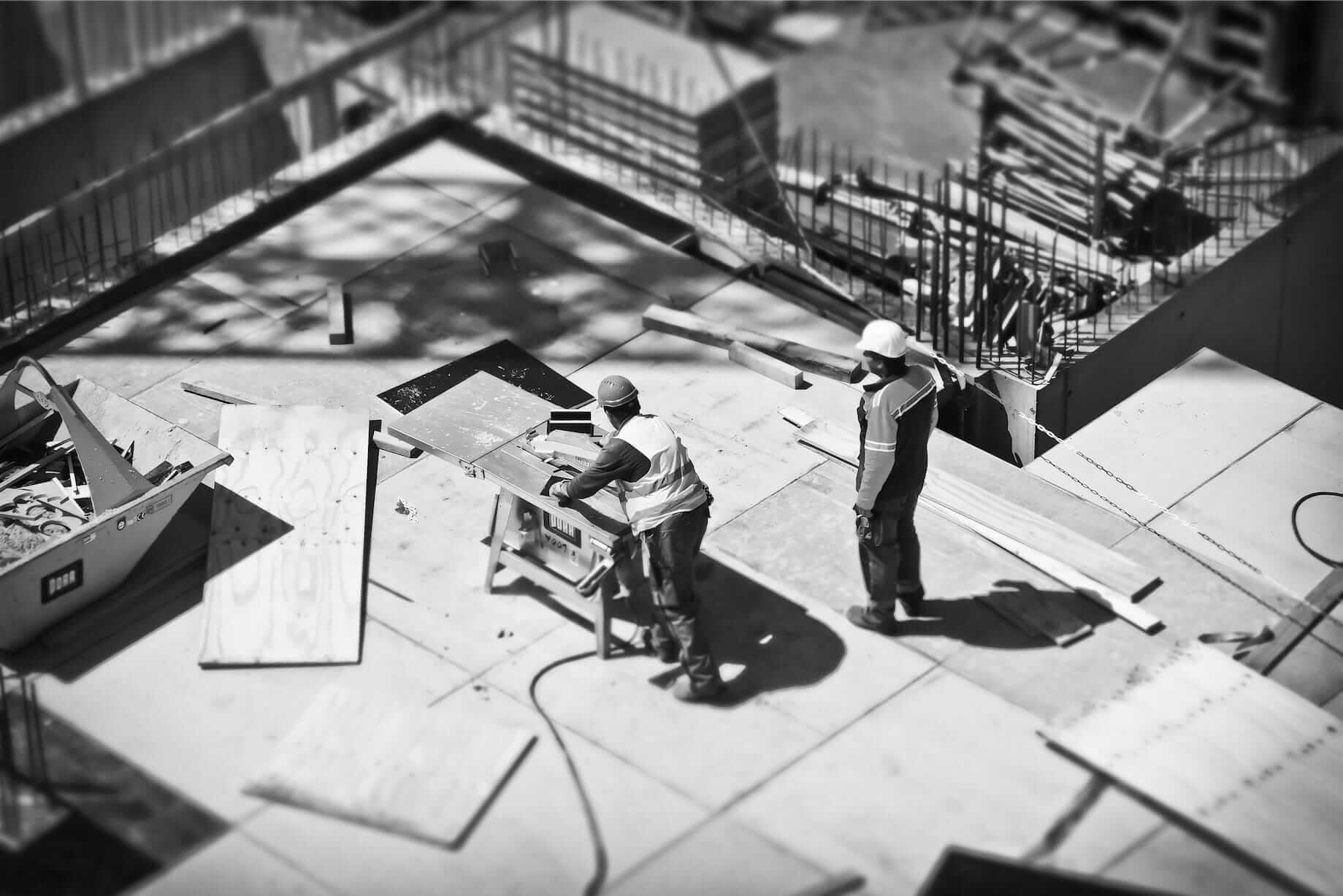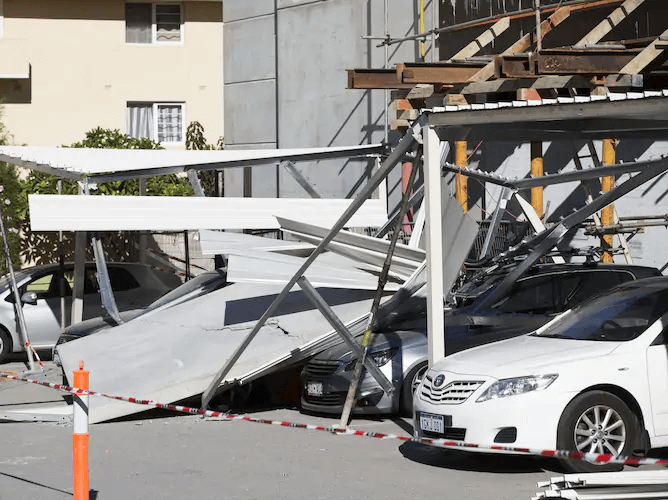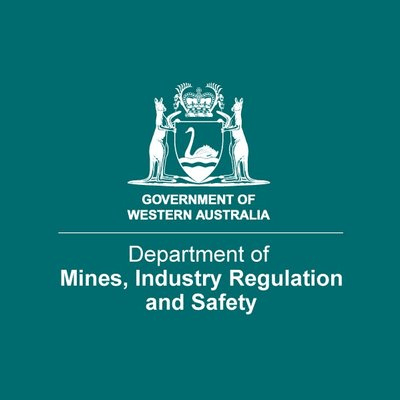
The Western Australian Builders Licence Explained
It happened on Adelaide Terrace, East Perth. A panel fell from a building under construction onto a nearby car park, crushing two cars (fortunately, only cars…). Soon the company, responsible for the incident, was brought to the Magistrates Court of Perth. A fine totalling $47,500 was issued to Hanssen Pty. Ltd.
 Image source: Perth Now
Image source: Perth Now
On the day of the incident an unlicensed surveyor was coordinating work on the site, as pointed out in the statement from WorkSafe Western Australia.
Not surprisingly, anybody working on a tilt-up construction must undergo an appropriate training because this type of building work is considered high risk. This requirement of law was ignored in the case of the Vue Tower; hence, the sad incident and its painful consequences.
This case is an important message to the industry practitioners: be serious about gaining proper training in construction and getting your licence as a qualified professional. There is no other shortcut to starting a successful career in the construction industry or taking your career to the next level.
How Do You Get Started?
The process you’ll have to go through to get your Builders Licence varies from state to state, and to save your time and resources, make sure you are familiar with all of the specific details and policies.
The Western Australia Building Commission is the entity that regulates the process of obtaining your Builders Licence. Once you obtain it, you’ll also be able to call yourself a Licensed Building Contractor. This title allows you to contract directly with your customers for various building work projects.

Image source: Twitter
Four Benefits Of Getting Your WA Builders Licence
In Western Australia, there are a few reasons you need a Builders Licence.
First, it allows you to work on projects valued at $20,000 and up.
Second, your Builders Licence ensures that you comply with any rules and regulations set by the Western Australia Building Commission.
Thirdly, it helps you make sure that your project is located inside the Building Service Board’s jurisdiction.
Finally, you minimize your chances to be involved in a construction failure. Being suitably qualified means you have the professional skill set to carry out tasks without falling into major pitfalls.
Choose The Type Of Builders Licence You Need
The first step is to decide which type of Licence you’ll need to be able to legally complete your jobs and projects. There are two main types available:
- Licensed Building Practitioner:This registration is for individuals. Anyone holding this type of Licence can be the nominated supervisor for a registered building contractor. When you have this licence, you can also use the title of “Registered Building Practitioner.” You’re not allowed to provide building services directly to another person with this licence.
- Licensed Building Contractor: This registration is for companies, partnerships, and individuals who intend to perform trades as builders. Once you get this licence, you or the business is able to provide services for the builder you contract or work for.
Note that registered practitioners and contractors must renew their registrations every three years.
It gets a bit trickier when it comes to the application process, so we’ll present the information with easy-to-digest chunks.
Begin The Application Process
Now that you know whether you need to become a Licensed Building Practitioner or the Licensed Building Contractor, it’s time to move on to the application process which involves choosing one of the offered sets. Each of them has different requirements and paperwork.
No doubt, you want to pick the one that aligns as closely as possible with your experience and qualifications.
Here are the five sets for building practitioner registration.
Set One: Building Practitioner Initial Application Form
The requirements for Set One are as follows:
- You successfully completed your CPC50220 – Diploma of Building and Construction (Building) .
- You have seven years of experience supervising or carrying out building work.
Set Two: Building Practitioner Initial Application Form
The requirements for Set Two are as follows:
- You have five years of full-time experience supervising building construction.
- You have an Architects Act of 2004registration, or you’re a current member of the RAIA (Royal Australian Institute of Architects), IEAust (Institution of Engineers Australia) or AusIMM (the Australian Institute of Mining and Metallurgy).
Set Three: Building Practitioner Initial Application Form
The requirements for Set Three are as follows:
- You have five years of full-time experience in supervising, carrying out or managing building construction.
- You have a membership with AIB(the Australian Institute of Building).
Set Four: Building Practitioner Initial Application Form
The requirements for Set Four are as follows:
- You gained the skills and knowledge equivalent to someone who has a CPC50220 – Diploma of Building and Construction (Building) .
- You have five years of full-time experience in managing building construction or supervising.
Set Five: Building Practitioner Initial Application Form
The requirements for Set Five are as follows:
- You have to have enough experience to gain the skills and knowledge equivalent to someone who has a CPC50220 – Diploma of Building and Construction (Building) .
- You have seven years of full-time experience carrying out building work outside of the Board’s jurisdiction area.
Start by choosing your set, fill it out, and submit it with fees and supporting documentation. The Building Commission staff will review every application, and the Building Services Board will consider them on an individual basis.
This leads us to the next point.
Experience And Qualification Documentation
No matter which class you apply for, you’ll have to have your qualifications and experience properly documented and on hand. You submit this documentation with your application before the Board will review it.
You must document any experience you have on the templates on the back of your registration form. You can choose from two different templates. Note that you must be able to have a relevant, credible, and independent person sign and verify any experience you claim.
If they can’t, you won’t be able to claim this experience on your application. You are also allowed to attach a statement of verification for your experience instead of using the templates.
For qualifications, you must have a CPC50220 – Diploma of Building and Construction (Building) or equivalent skills and experience. These units include:
- CPCCBC4005A– Produce labour and material schedules for ordering.
- CPCCBC4018A– Apply site surveys and set-out procedures to building and construction projects.
- CPCCBC5005A– Select and manage building and construction contractors.
- CPCCBC5007A– Administer the legal obligations of a building construction contract.
- CPCSUS5001A– Develop workplace policies and procedures for sustainability.
- CPCCBC4014A– Prepare simple building sketches and drawings.
- CPCCOHS1001A– Work safety in the construction industry.
An important note here.
You can earn this experience by undertaking a construction course from an accredited training company otherwise called Registered Training Organizations (RTOs).
RTOs are providers of quality-assured and nationally recognised training programs and qualifications. Before enrolling in a training course, it’s critical to check that the training provider is authorised to offer the training course.
Additionally, there is some miscellaneous information that you’ll have to provide with your application. You’ll need proof of your identity, and this includes things like a driver’s licence or passport.
If it’s a business partnership, you’ll have to provide proof of the business partnership for each person who plans to contract under the partnership.
You are close to the final step.
Submit The Application
Once you have all of the relevant information, documentation, and the completed application, you can submit it to the Western Australia Building Commission.
The staff will review your application and approve it or request additional information. When they approve it, they’ll send you paperwork with your unique licence number as well as what it entitles you to do.
Mutual Recognition
You don’t need to start your career from scratch if you are already registered or licensed as a building practitioner elsewhere in Australia or New Zealand. Fortunately, there is a mutual recognition policy and you simply need to get acquainted with the details of how to be registered as a building practitioner in Western Australia.
Getting A Builders Licence In Australia At A Glance
If you need details on the regulations and procedures for acquiring a builders licence in each state and territory in Australia, consult our Ultimate Guide to Acquiring a Builders Licence in Australia.
Here is a chart, to make it easier for you to find the official licensing body in each state:
|
1 |
Builders Licence New South Wales |
|
|
2 |
Builders Licence Victoria |
|
|
3 |
Builders Licence Queensland |
|
|
4 |
Builders Licence Western Australia |
|
|
5 |
Builders Licence South Australia |
|
|
6 |
Builders Licence Northern Territory |
|
|
7 |
Builders Licence Tasmania |
|
|
8 |
Builders Licence ACT |
Your Key Takeaways!
A builder’s licence is not merely a piece of paper that helps to start a new career or further the existing one. It sets you up for a professionally fulfilling journey that provides financial stability and career advancement.
It’s a journey that starts with a quality training.
Do you want to learn from the comfort of your home or office? Do you think you need one-on-one support to be successful in your studies? Do you need a learning experience that’s effective and quick?
Meet Back to Basics.
We are a nationally recognized training provider in Australia that helps you earn your desired qualification and build a shining career in construction.
Here is how:
- You gain access to training materials written by builders for builders.
- You receive individual training from industry experts.
- You learn at your own pace.
- You join a community of professionals and build a reliable network of industry practitioners.
By the way, we take the stress of making extra payments out of the process. Our fees are all-inclusive. No additional payments for the training materials and textbooks.
If there is any further information we can provide about this career path, or about the education requirements around getting a builders licence in Australia, send us a message, call us on 1300 855 713 or email enquiries@backtobasics.edu.au.